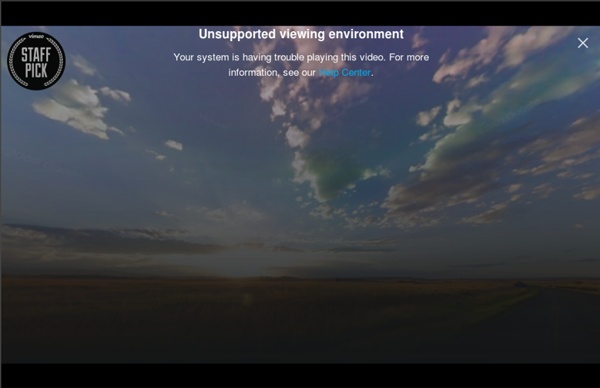



The Oxford handbook of food history / edited by Jeffrey M. Pilcher Machine generated contents note: pt. I FOOD HISTORIES -- 1.Food and the Annales School / Sydney Watts -- 2.Political Histories of Food / Enrique C. Ochoa -- 3.Cultural Histories of Food / Jeffrey M. Pilcher -- 4.Labor Histories of Food / Tracey Deutsch -- 5.Public Histories of Food / Rayna Green -- pt. II FOOD STUDIES -- 6.Gendering Food / Carole Counihan -- 7.Anthropology of Food / Emiko Ohnuki-Tierney -- 8.Sociology of Food / Krishnendu Ray -- 9.Geography of Food / Bertie Mandelblatt -- 10.Critical Nutrition Studies / Charlotte Biltekoff -- 11.Teaching with Food / Jeffrey Miller -- pt.
The joy of cloudspotting: 10 incredible visions in clouds A “cloud on the horizon” means that something bad is about to happen. Meanwhile, someone with their “head in the clouds” is thoroughly out to lunch. As Gavin Pretor-Pinney points out in today’s talk, clouds get a bad rep when it comes to language. Save or Print High Resolution Images from Google Earth - Dylan Brown Designs How to Save or Print High Resolution Images from Google Earth This post has been heavily updated since its original published date of January 1, 2014. High resolution imagery can be used for many purposes, including digital and print maps, backgrounds for drawings, or perspective images of the new 3D imagery. This tutorial will show you how to find, download, print, and stitch together those images.
Social causes of health and disease [electronic resource] / William C. Cockerham In this stimulating book, William C. Cockerham, a leading medical sociologist, assesses the evidence that social factors (such as stress, poverty, unhealthy lifestyles, and unpleasant living and work conditions) have direct causal effects on health and many diseases. Noting a new emphasis upon social structure in both theory and multi-level research techniques, the author argues that a paradigm shift has been emerging in 21st-century medical sociology, which looks beyond individual explanations for health and disease. The field has headed toward a fundamentally different orientation, and Cockerham's work has been at the forefront of these changes.
18 Remarkable Photos of Nature Reclaiming Civilization Source: danjur Humanity is often proud of its great feats of engineering, we are dazzled by the structures we can create, by our mastery over our surroundings, and all of this is for good reason. The science and mathematics behind the structures of civilization are amazing, but nature shows no particular respect for all the hard work. One way or another, things that are left to decay will be taken back by the unstoppable forces of nature. Permissions – Google Google Maps and Google Earth's content includes everything you'd find in these products: map and terrain data, imagery, business listings, traffic, reviews, and other related information provided by Google, its licensors, and users. These guidelines cover your use of the content – with one exception. There are some particular guidelines regarding your use of Street View imagery available from both Google Maps and Google Earth. Please read the section below for instructions on how Street View imagery may or may not be used. Terms of Service To help you figure out whether your use of the content is acceptable, first read the following documents:
Health of People, Places and Planet - ANU Press - ANU This book has three main goals. The first is to celebrate the work of a great public health figure, the late A.J. (Tony) McMichael (1942–2014). The second is to position contemporary public health issues in an interdisciplinary context and in ways that highlight the interdependency between the environment, human institutions and behaviours; a broad approach championed by Tony.
Aurora australis as seen from the Australian and New Zealand mainlands Updated The swirls, twists, and curtains of light of the aurora australis were visible from the Australian and New Zealand mainland overnight. The natural light display caused a flurry of excitement, captured on social media. As explained by the Australian Bureau of Meteorology, the phenomenon is caused when electrically charged electrons and protons accelerate down the Earth's magnetic field lines and collide with neutral atoms in the upper atmosphere — usually about 100 kilometres above the Earth. "These collisions cause the neutral atoms to fluoresce, emitting light at many different wavelengths.
Contact with nature positively affects happiness and wellbeing Spending time in nature influences our subjective wellbeing, which has long-term health and financial consequences. Spending time in nature influences our subjective wellbeing. Photo: Graham Tidy. NEW research by Planet Ark, released in the lead up to National Tree Day, investigates how contact with nature affects people’s life-long happiness and the physiological impacts it has on the brain. The surveys included in the report used internationally recognised scales to measure the connection to nature and happiness of participants.
These 'Mind-Blowing And Humbling' Instagram Photos Will Remind You Of Earth's Wild Beauty Sam and Amanda Ciurdar often find themselves retreating into nature, captivated by Earth’s beauty. The Southern California couple, both devout Christians, take every opportunity to travel into the wilderness with their cameras in tow. Whether it's the forests of Oregon or the sand dunes of their home state, nature is the place for them to meditate and be present. “It feels like that’s truly where we belong,” Amanda told HuffPost. “There’s just something that happens in our souls where we’re able to disconnect from the busyness of life.” There’s plenty of vast, wide open spaces in the couple’s photography -- a reminder, Sam says, of how small humans are compared to God’s creation.